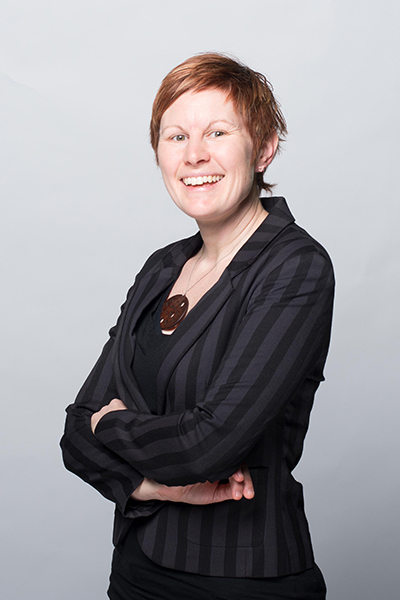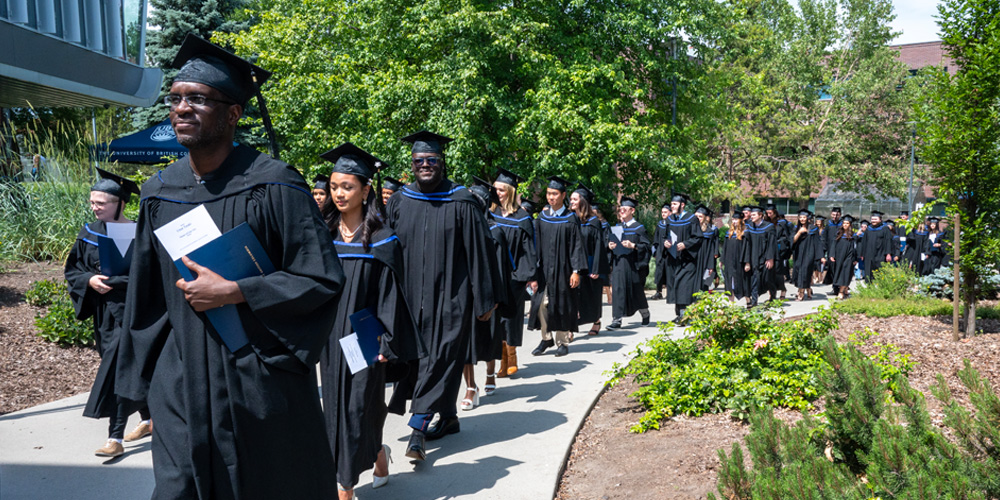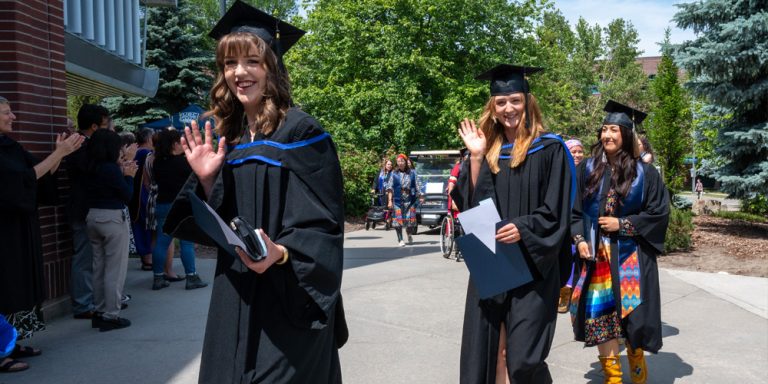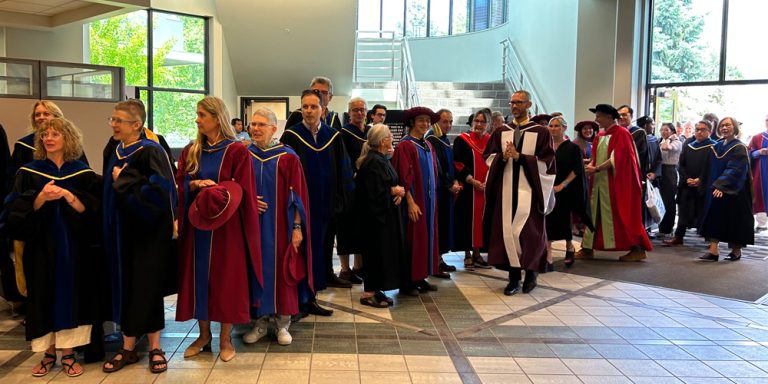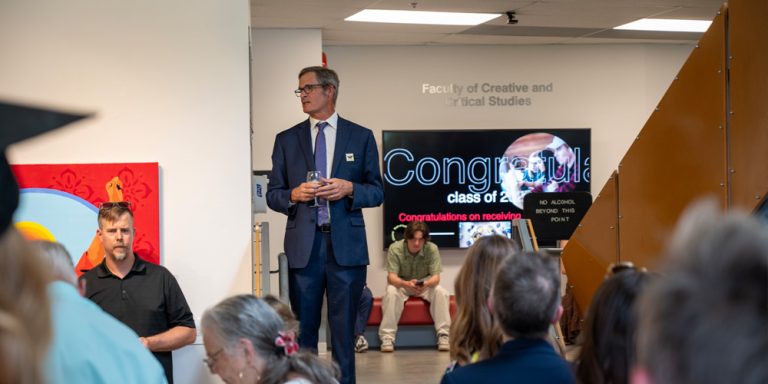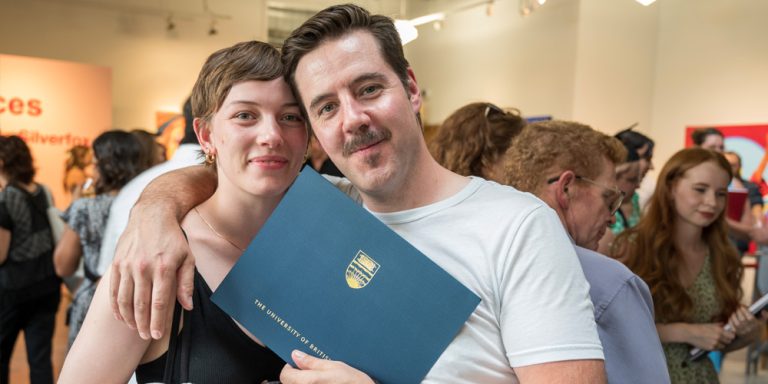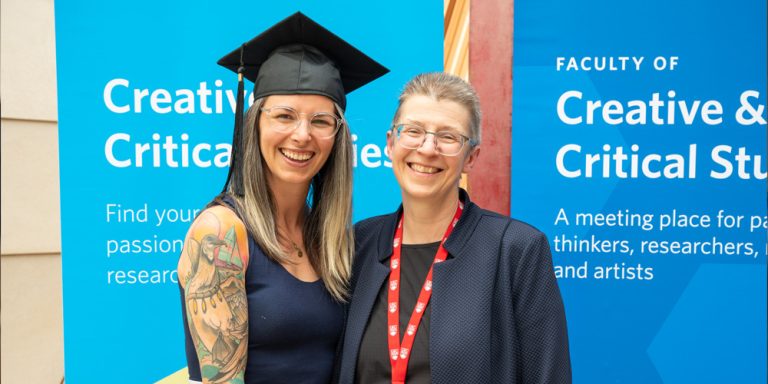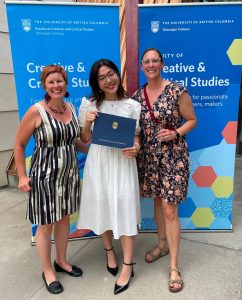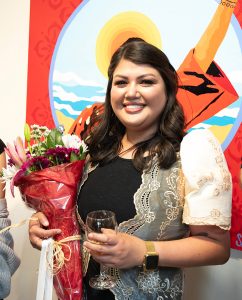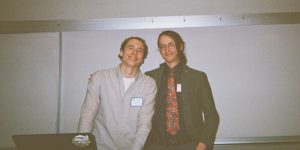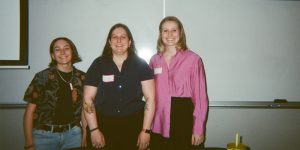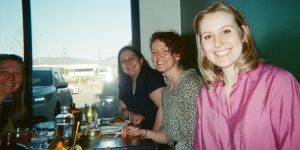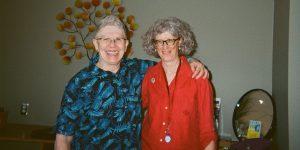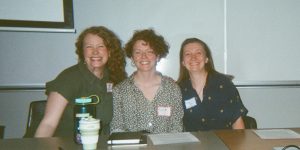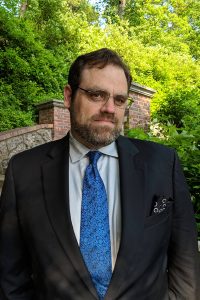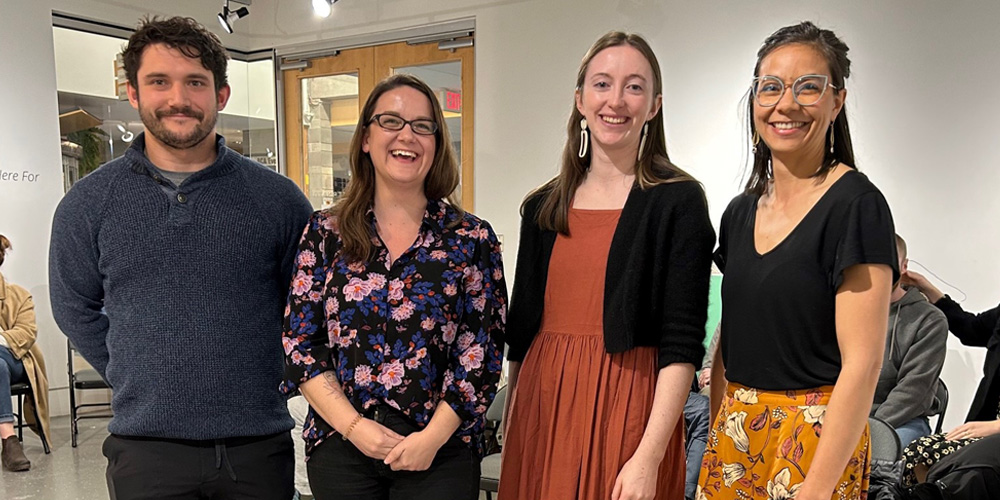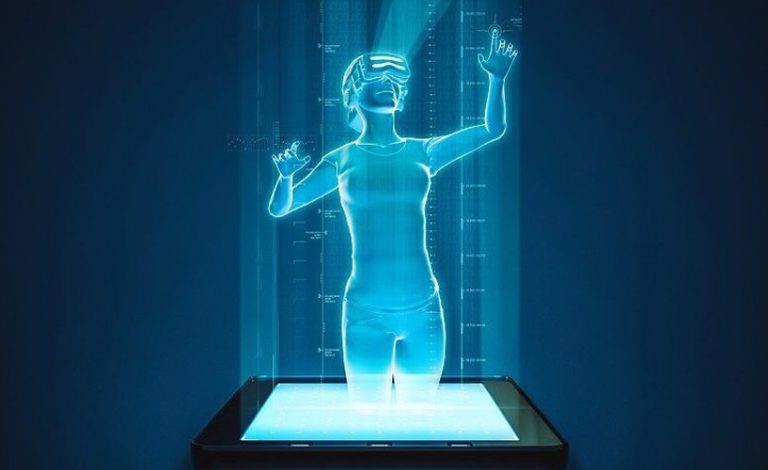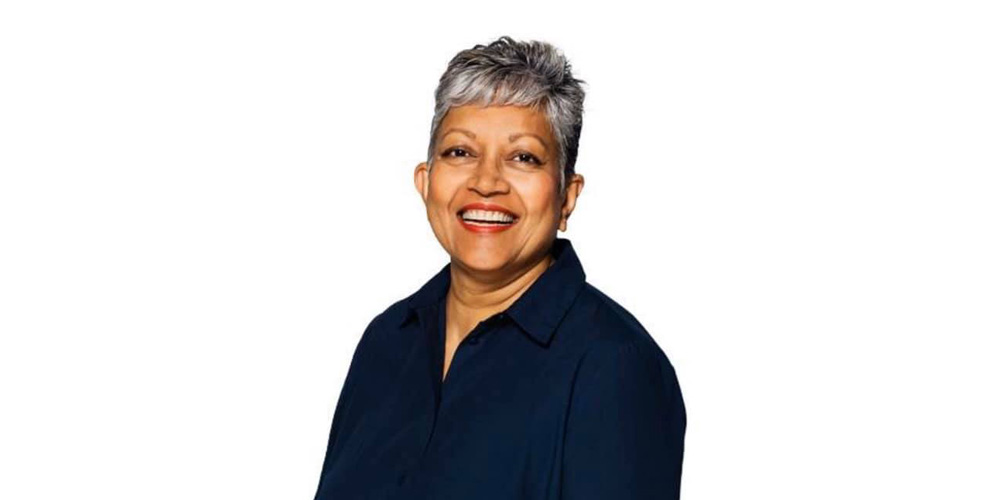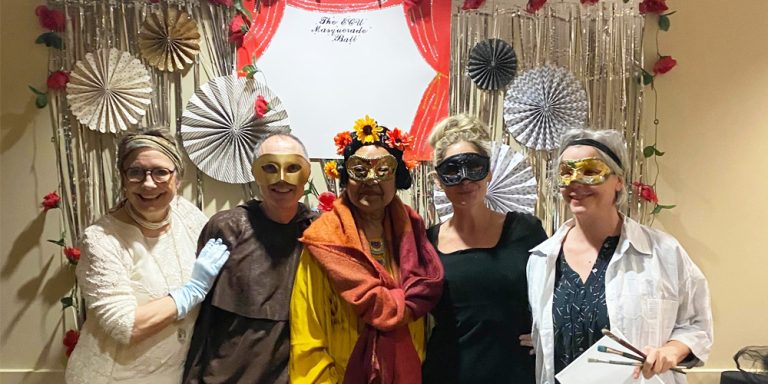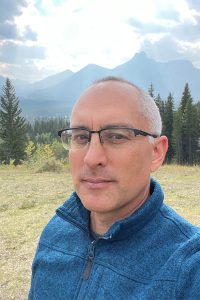The year’s convocation ceremony was held in person on June 8th, and the faculty and staff in the Faculty of Creative and Critical Studies are happy to congratulate all of the students who completed their degrees in 2023.
This year we have sixteen masters students, four doctoral students, fifty-one Bachelor of Arts students, seventeen Bachelor of Fine Arts students, and four Bachelor of Media Studies students who are graduating with their degrees.
Breckin Baillie, who completed his BA degree with an Honours in English, and a member of the graduating class of 2023, was the student reader at our ceremony, and shared these words with the graduating class:
“These years of our lives, will not be idly shelved into the recesses of our brain to be forgotten. While we have been here, we have fulfilled this etymology of nourishing – we have been nourished by this institution, by the education we have received,” he said. “We have been nourished as adults, as future leaders, as pioneers in our fields, the giants whose shoulders will be stood on, we have learned to speak, to read, to think, our minds, our greatest gifts, have been challenged, corrected and expanded.”
Breckin reminded us all that these graduating students are now part of the alumni family of UBC: “Never forget the nourishment we have received here. While our time as students may be over, our relationship has just changed status. As alumni we are now part of a great family – a family of scholars, creators, world builders. We now belong to a community of changemakers and leaders.”
After the ceremony, a reception was held in the Creative and Critical Studies building for all of the FCCS graduates and their guests to continue the celebrations of the day. Bryce Traister, Dean of the faculty raised a glass to toast this year’s graduating class and their families.
“There are moments when I feel very proud to be part of an institution, and today was one of those days,” Traister said. “I always feel lucky to say I get to spend a life in schools, it has been my privilege to be able to do that. And I want to extend a welcome to each of you to come back and see us, tell us what you are doing, what you want to do, and what we need to do better. The faculty and all of the staff are full of excitement for your future.”
FCCS is also pleased to recognize the achievements of the following graduating or continuing students who received awards for their outstanding academic performance this year:
- Savanah Babij, Kelly Curtis Memorial Scholarship in English
- Sonja Berg, Jaeger Entrance Award
- Aditri Chatterjee, Faculty of Creative and Critical Studies International Student Award
- Ronnie Cheng, 2021 Vernon Film Society Media Prize
- Mihai Covaser, FCCS French Essay Prize
- Rain Doody, Jill Douglas Entrance Award
- Katja Ewart, Asper Scholarship
- Cady Gau, Visual Arts Scholarship; Murray Johnson Memorial Award in Visual Arts
- Madeline Grove, FCCS International Student Award
- Makeena Hartmann, Elinor Yandel Memorial Award in Fine Arts; Norma and Jack Aitken Prize in Visual Arts
- Jaine Hillier, Media Studies Scholarship
- Josie Hillman, Asper Graduating Prize
- Chloe Jenkins, Visual Arts Prize
- Simone King, Doug Biden Memorial Scholarship in Visual Arts
- Peyton Lynch, Craig Hall Memorial Visual Arts Scholarship in Printmaking
- Elizabeth MacDonald, FCCS French Scholarship
- Emily-Jayne May Myatt, FCCS Dean’s Award for Visual Arts
- Mariah Miguel-Juan, Visual Arts Prize
- Claire Miller-Harder, Campbell Family Graduate Award in Fine Arts
- Carrie Mitchell Jack and Lorna Hambleton Memorial Award
- Alberte Patenaude, FCCS Spanish Scholarship
- Christal Perdison, FCCS Languages Scholarship; FCCS International Student Award
- Rachel Pickard, FCCS Cultural Studies Scholarship
- Arthur Pielecki, Asper Scholarship
- John Prendas, Frances Harris Prize in Fine Arts; Henderson Award in International Development
- Calise Stankoven, Creative Studies Transfer Prize in Creative Writing
- Marissa Thompson, Creative Writing Prize
- Naomi Ukrainetz, Jessie Ravnsborg Memorial Award
- Mathew Wanbon, FCCS Creative Writing Scholarship
- He Wanling, FCCS Art History and Visual Culture Scholarship
- Ziv Wei, FCCS International Student Award
- Abigail Wiens, FCCS English Scholarship
- Margaret Wileman, Dr. Shelley Martin Memorial Scholarship
The FCCS Dean’s Honour list recognizes students in all years of the BA and BFA degrees, who are at the top of their class with a GPA of 85% or better.
Bachelor of Arts Students
|
|
Bachelor of Fine Arts Students
|
|
Bachelor of MEdia Studies Students
|
|
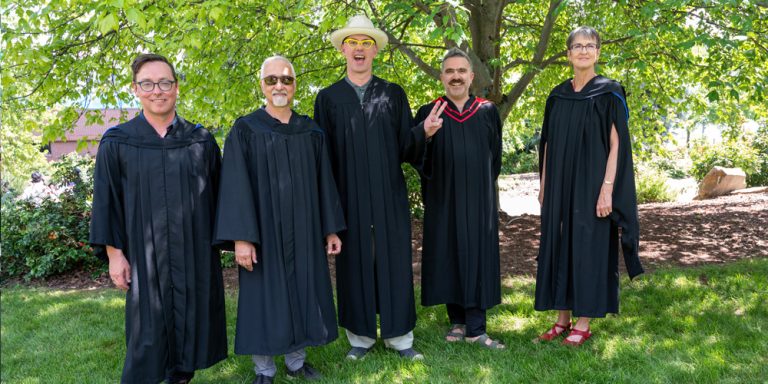
FCCS faculty members Myron Campbell, Ramine Adl, Michael V. Smith, Francis Langevin and Nina Langton before the ceremony
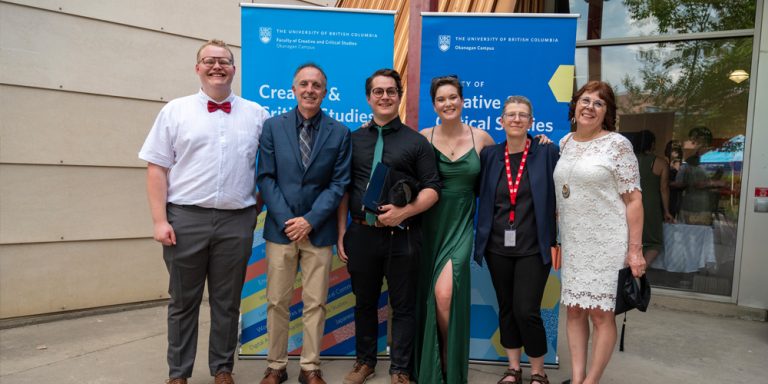
English Honours students Breckin Baillie, Zachary Sawchuk, Abigail Wiens,
Maggie Wileman faculty members Robert Eggleston and Marie Loughlin
